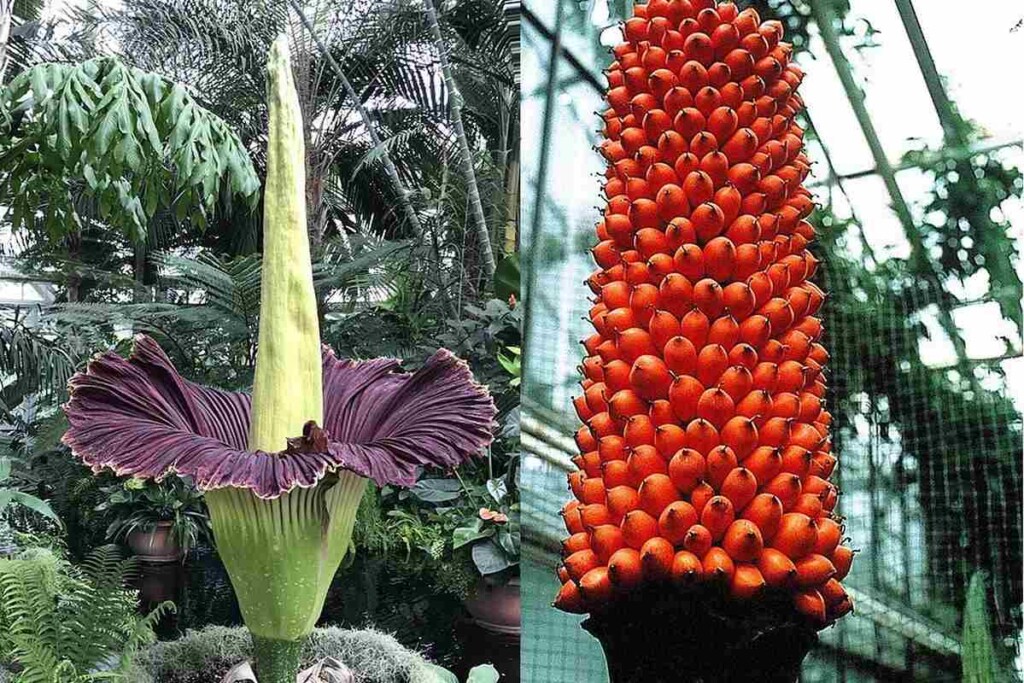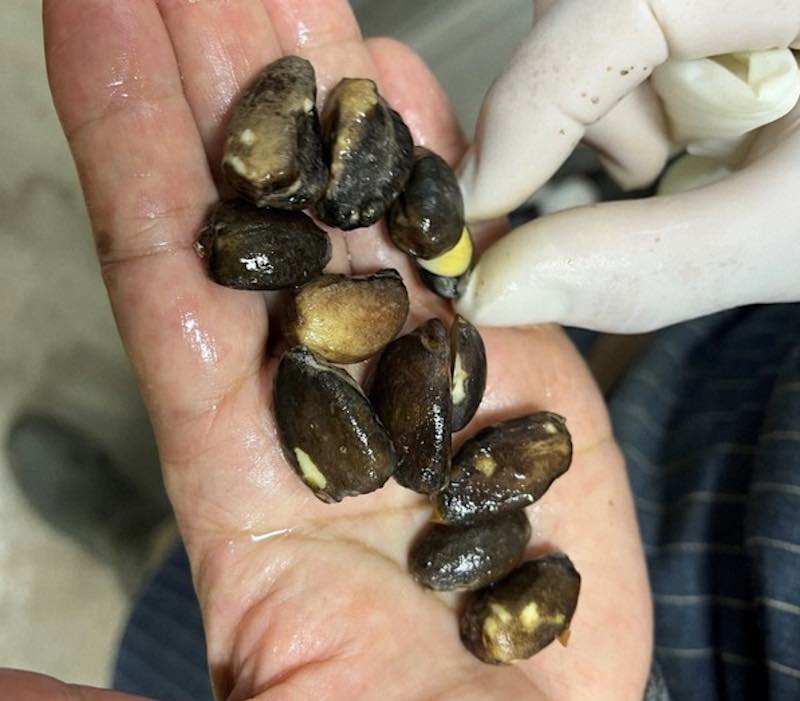
There is more than one species of ‘corpse flower’ and in an incredible coincidence, two managed to bloom at the same time in a Japanese botanical garden, allowing the two to pollinate naturally.
The result of this incredible stroke of fortune is that one of the corpse flowers has now fruited, bearing 736 seeds critical for conserving this wondrous botanic enigma.
While the most famous corpse flower may be the Rafflesia genus, these Amorphophallus titanum, or titan arums for short, share all the same wonders.
In the rainforests of the Indonesian islands of Sumatra and Borneo, these flowers produce massive blooms at completely random intervals spanning years. Of the 10 titan arums in the Tsukuba Botanical Gardens of Japan’s National Museum of Nature and Science, only one has bloomed since 2012. Once the flower, which is the world’s largest, comes out into the sun, it begins to release a chemical scent to attract pollinating insects.
But it isn’t looking for nectar feeders, Rafflesia and Amorphophallus are looking for carrion flies. The smell has been described as everything from rotting meat to rancid garlic, and made it difficult for the workers at Tsukuba to gather the pollen from the giant flowers.
Every artificial attempt at pollinating these plants in captivity has failed, and none of the plants have pollinated naturally.
“We don’t know why, whether pollination can’t occur with pollen from this one plant, or whether pollen has a limited shelf life,” Head researcher Chie Tsutsumi told the Mainichi.

Then, in May of this year, a female plant in their gardens produced a small bloom 8 days before a male plant produced an enormous one. They quickly took pollen from the first one and used it to pollinate the second one.
It took about an hour to carefully swab the pollen onto the female plant, all the while the staff were bathed in a famous reek that was very difficult to get out of their clothes, the Mainichi reports.
In November, the plant fruited, and the team gathered the persimmon-like seeds from over 700 small red fruits for cultivation.
“It’s a difficult plant to cultivate, but I’m looking forward to growing it from seed,” said Tsutsumi.
MORE CAPTIVE BREEDING SUCCESS: Flower That Grew Only in York Brought Back From Extinction After 30 Years—First Ever British De-Extinction
In February of 2022, GNN reported on the work of Sofi Mursidawati, a Ph.D. in agriculture at the Bogor Botanical Gardens, who is attempting to create the world’s first nursery for a more famous corpse flower, Rafflesia arnoldii, which has a very different character to titan arum.
Rafflesia is a parasitic specimen that has no leaves, roots, or stems, but rather only one giant, one-meter-long, 20-pound bloom. By contrast, titan arum has a root system—it’s the largest single corm, or tuber, on Earth—weighing over 200 pounds.

With seeds the size of sawdust grains, pollinated flowers infect a genus of vines called Tetrastygma, before slowly growing over many months into an enormous cabbage-sized bulb. The curiosities don’t end there. In fact, it barely qualifies as a plant.
OTHER SPECTACULAR SPECIES: New Species of Owl Discovered on Tiny Island off African Coast – And it was Named After ‘Unflinching’ Park Ranger
It branched away from having genetics that code for photosynthesis millions of years ago, and relies entirely upon its host for energy. Furthermore, and unlike most flowers that have pollinating and pollination equipment, Rafflesia blooms are sexually monomorphic, which means that even after taking a year to grow a flower once it’s time to reproduce, it can only succeed if there is another flower of the opposite sex within the same territory of the carrion flies attracted to the scent of rot from its nectar.
SHARE These Incredible Plants And The Lucky Botantists Working With Them…




















